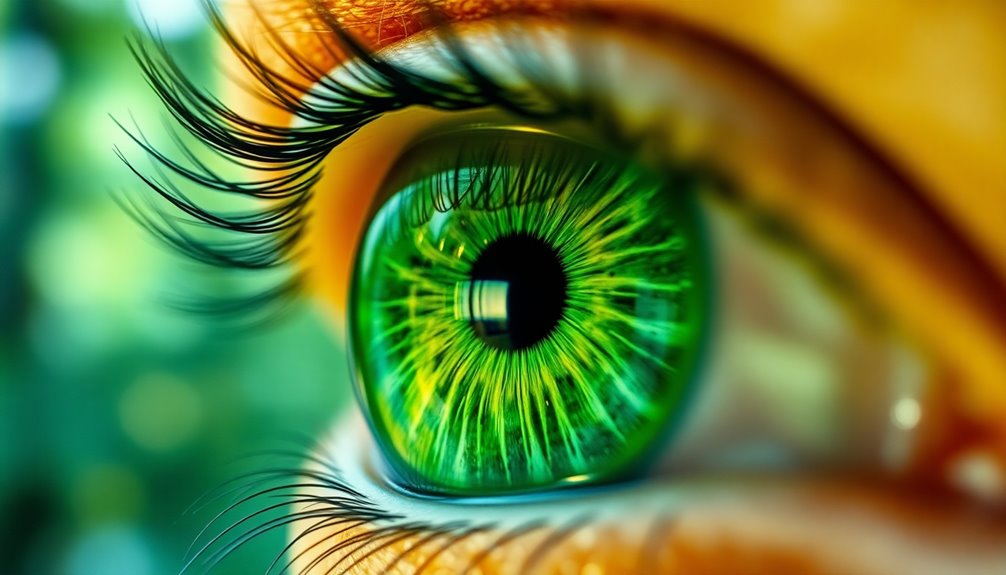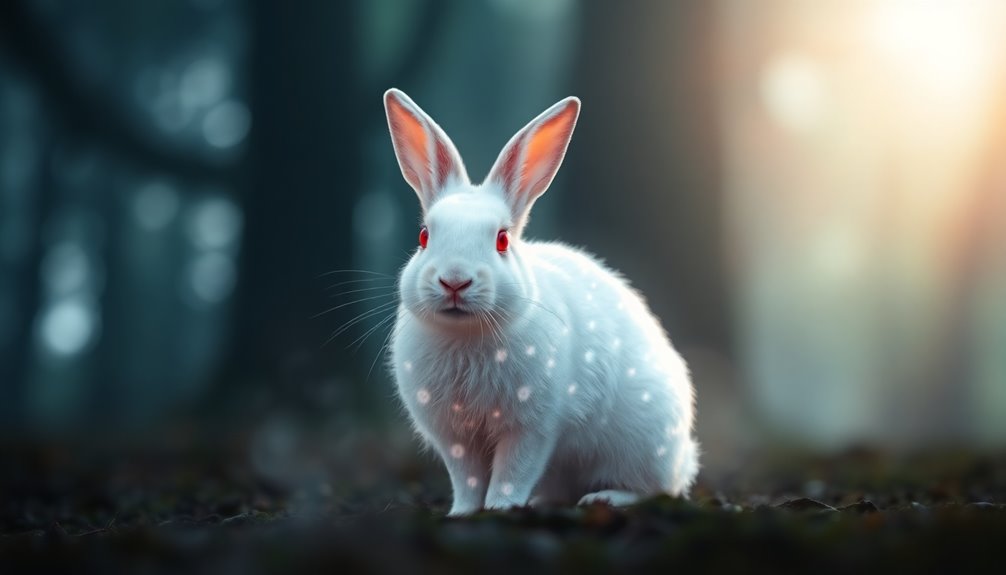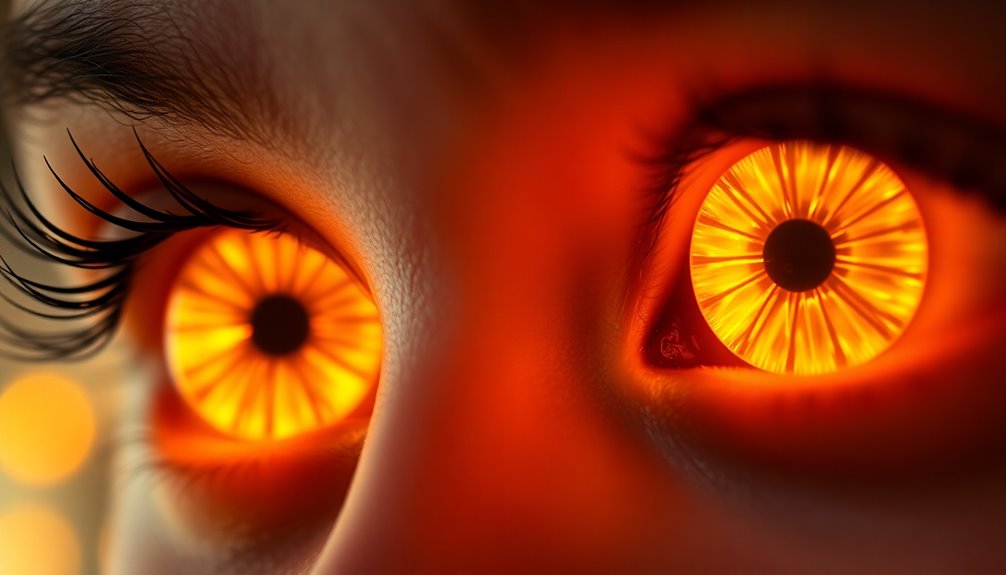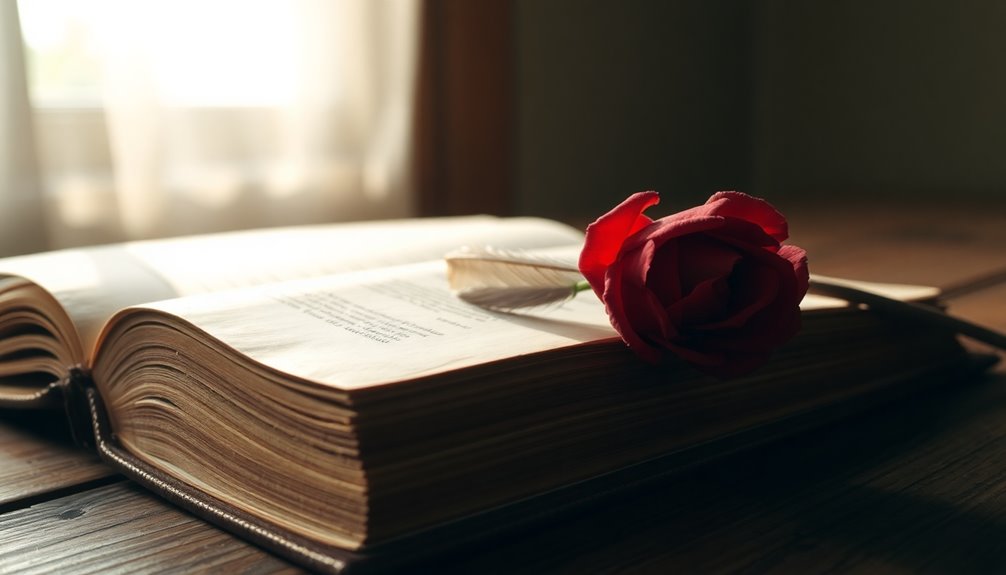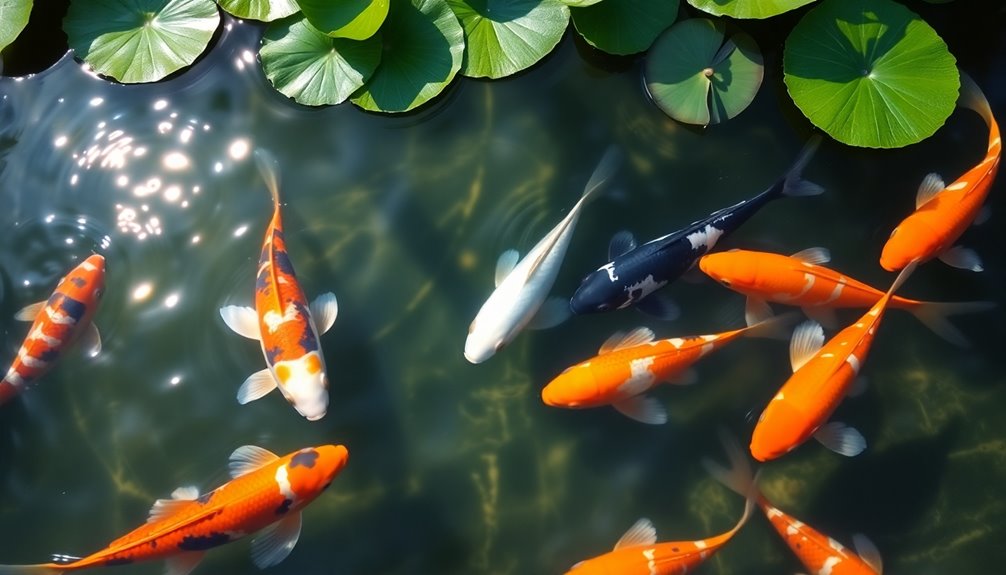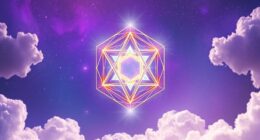Green eyes, found in just 2% of the global population, are known for their mesmerizing beauty and emotional depth. Representing rarity, they bring to mind themes of mystery and individuality across cultures. Historically, green eyes have symbolized rebirth and fertility in ancient Egypt and linked to witchcraft in medieval Europe. Artists like Gustav Klimt celebrated their enchanting allure, while popular culture enhances their mystique through iconic characters and songs. The uniqueness of green eyes challenges conventional beauty norms, creating a profound emotional connection. If you're intrigued by their rich symbolism, you're just scratching the surface of their vibrant stories!
Key Takeaways
- Green eyes symbolize rarity and beauty, often linked to individuality and emotional depth across various cultures and historical contexts.
- Ancient civilizations associated green eyes with rebirth, fertility, and supernatural abilities, highlighting their mystical allure.
- In art, green eyes are frequently depicted to convey emotional complexity, inviting introspection and challenging conventional beauty standards.
- Popular culture celebrates green eyes through iconic characters and celebrities, reinforcing their allure and cultural significance in society.
- The rarity of green eyes enhances their symbolic value, representing uniqueness and the challenge to societal perceptions of beauty.
Rarity of Green Eyes

When it comes to eye colors, green eyes stand out due to their rarity, occurring in only about 2% of the global population. This unique eye pigmentation is particularly prevalent in Northern Europe, especially in countries like Ireland and Scotland, where some areas report up to 30% of the population boasting this striking hue.
For you, having green eyes can feel like a special badge of honor, as their rarity often attracts admiration and curiosity.
The rarity of green eyes is closely linked to specific genetic mutations in the OCA2 and HERC2 genes, which influence melanin production in the iris. These mutations result in the stunning "Emerald Gaze" that you might possess.
In contrast, darker eye colors like brown dominate in regions such as Asia and Africa, highlighting just how uncommon green eyes are on a global scale.
Cultural significance also plays a role in the allure of green eyes, often symbolizing mystery and enchantment.
The historical migrations and intermarriage among Celtic and Germanic populations have contributed to the prevalence of green eyes in these areas, while mixed ancestry can lead to sporadic appearances elsewhere, making your eye color even more special.
Genetic Foundations

The genetic foundations of green eyes are enchanting, rooted in a unique combination of melanin levels and specific genes. These striking eyes result from low melanin levels of eumelanin and moderate levels of pheomelanin in the iris. The primary players in this genetic puzzle are the OCA2 and HERC2 genes.
Interestingly, green eyes are a genetic anomaly, occurring in only about 2% of the global population, making them one of the rarest eye colors.
The inheritance of green eyes follows a polygenic inheritance pattern, which means multiple alleles from both parents influence the trait. This complexity means that even if your parents have brown or blue eyes, you might still end up with green eyes.
Green eyes are commonly associated with individuals of Celtic and Germanic ancestry, with significant concentrations found in Northern Europe, particularly in regions like Ireland and Scotland.
Moreover, genetic variations and historical migrations have led to sporadic appearances of green eyes across various ethnic groups, showcasing the intricate interplay of genetics and geographic distribution in determining this enchanting eye color.
Cultural Symbolism
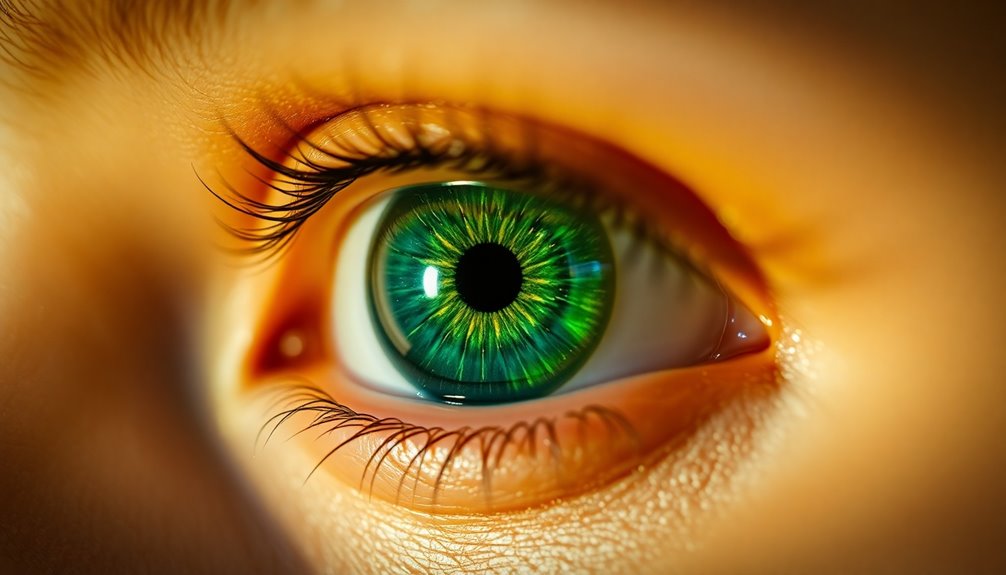
Green eyes carry a rich tapestry of cultural symbolism, often regarded as a blend of rarity and beauty that enchants the imagination. Across various cultures, green eyes symbolize individuality and emotional depth, evoking complex feelings like love, envy, and jealousy.
In ancient Egypt, these striking eyes were linked to rebirth and fertility, while medieval Europe often associated them with witchcraft and supernatural abilities.
The mystical allure of green eyes enhances their significance, embodying themes of nature and liveliness. They're often seen as a reflection of renewal and growth, connecting the wearer to the earth and its cycles.
This deep connection influences creative expression, as artists and writers frequently depict characters with green eyes as enigmatic and powerful.
Historical figures and icons like Cleopatra and Elizabeth Taylor have further fueled fascination with this eye color. Their enchanting green gazes symbolize not just beauty but also strength and charisma, deepening our understanding of green eye cultural symbolism.
Fundamentally, the rarity and vibrant hues of green eyes continue to inspire, representing a unique blend of allure, history, and the rich emotional landscape of humanity.
Historical Perspectives
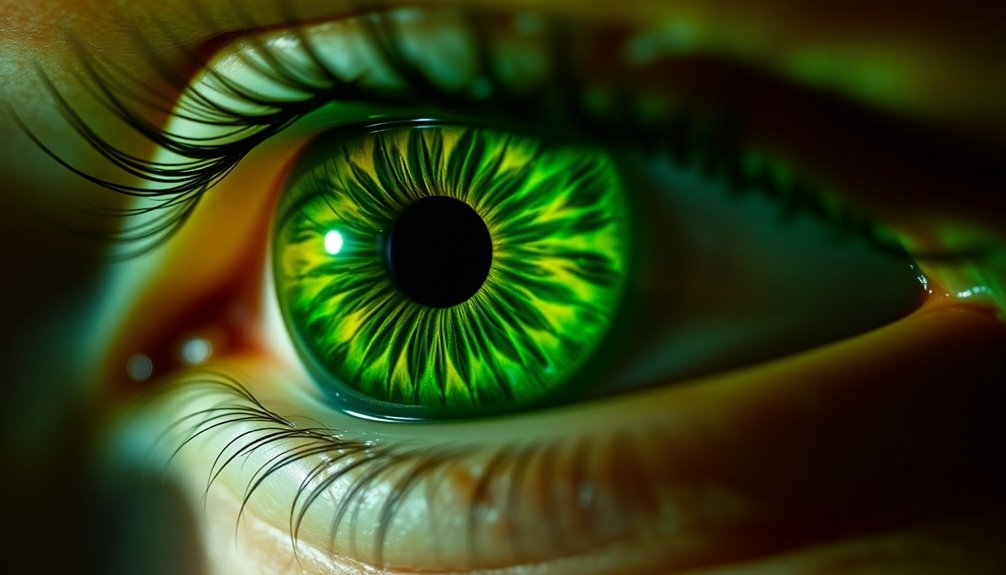
Throughout history, green eyes have fascinated imagination and sparked intrigue, often wrapped in layers of mystique and magical associations. The mystical allure of green has led many cultures to attribute special powers to green-eyed individuals.
- In ancient Egypt, green eyes symbolized rebirth and fertility, connecting the color to renewal and liveliness.
- Medieval European societies often viewed green-eyed individuals with suspicion, linking them to witchcraft and casting them as enigmatic figures.
- Japanese folklore celebrated green-eyed individuals, believing they possessed unparalleled sight and supernatural abilities.
- Cultural narratives have romanticized green-eyed characters, emphasizing themes of individuality and uniqueness.
These historical perspectives illustrate how green eyes have been enshrined in the collective consciousness, reflecting both admiration and fear.
Whether seen as symbols of magical prowess or carriers of extraordinary traits, green-eyed individuals have left an indelible mark across cultures. Their fascinating gaze continues to inspire stories and legends, embodying the complexities of human perception and the timeless appeal of the extraordinary.
Green Eyes in Art

When you explore green eyes in art, you'll notice how they've captured the imagination of artists throughout history.
From classical masterpieces to modern interpretations, these enchanting eyes often symbolize beauty and mystery.
You might even find their presence in literature, showcasing their emotional depth and connection to nature and the supernatural.
Historical Artistic Representations
Artists have long turned to green eyes as an enthralling feature in their works, often using them to convey mystery and emotional depth. This striking eye color has graced various artistic representations throughout history, symbolizing individuality and creativity.
From ancient Egyptian art, where green eyes represented the goddess Hathor and signified fertility and rebirth, to notable Renaissance paintings, the allure of green eyes has captivated audiences.
Consider these vivid depictions:
- The enchanting gaze of Gustav Klimt's "Portrait of Adele Bloch-Bauer I," where light and color emphasize the subject's mesmerizing green eyes.
- Johannes Vermeer's "The Girl with a Pearl Earring," showcasing a muse whose greenish eyes embody enigmatic beauty and intrigue.
- Ancient Egyptian artifacts that celebrate the goddess Hathor's green eyes, reinforcing cultural symbolism and reverence.
- Contemporary illustrations that continue this tradition, reflecting the emotional depth and allure inherent in characters with green eyes.
Through these artistic interpretations, green eyes remain a powerful motif, embodying a rich tapestry of emotions and meanings that resonate through the ages.
Green Eyes in Literature
In literature, green eyes often symbolize mystery and allure, intriguing readers with their enchanting qualities. Characters with green eyes, like Scarlett O'Hara in "Gone With the Wind," embody mesmerizing beauty that draws others in. These eyes serve as windows to the soul, reflecting complex human emotions and experiences.
Poets like Sylvia Plath utilize green eyes as metaphors for emotional depth. In her poem "Green Eyes," she explores themes of jealousy and beauty, showcasing the duality often associated with this striking color. The symbolism of green eyes enhances their allure, representing not just physical attributes but deeper, more intricate emotional landscapes.
Folklore adds another layer to this mystique, often romanticizing green-eyed individuals as possessing supernatural traits or unique abilities. This cultural narrative further reinforces the idea that green eyes hold a certain power, enchanting those who encounter them.
Ultimately, literature weaves together these threads of mystery, beauty, and emotional complexity, allowing green eyes to become a symbol of the multifaceted nature of human experience. Through these characters, readers can explore the depths of fascination and the mysteries hidden within.
Modern Artistic Interpretations
Green eyes have captivated artists for centuries, often serving as powerful symbols of beauty and emotion in their work. In modern art, these striking features embody themes of individuality and uniqueness, drawing viewers into an intricate world of meaning. Artists like Gustav Klimt and John Singer Sargent have famously showcased green-eyed subjects, emphasizing their allure and complexity in stunning portraits.
- The vibrant contrast of green eyes against muted backgrounds, enhancing their visual impact.
- The emotional depth these gazes convey, inviting introspection regarding beauty and identity.
- The mystery encapsulated in each green-eyed glance, suggesting untold stories and cultural narratives.
- The way contemporary pieces explore the human experience, intertwining personal and collective identities.
Today, green eyes in art continue to evoke profound emotions, representing a blend of beauty and enigma. Through various artistic interpretations, they not only highlight the subject's individuality but also challenge viewers to reflect on their own perceptions of beauty.
As you engage with these artworks, you'll find that each portrayal deepens your understanding of the complex relationship between art, identity, and the human experience.
Popular Culture Influence
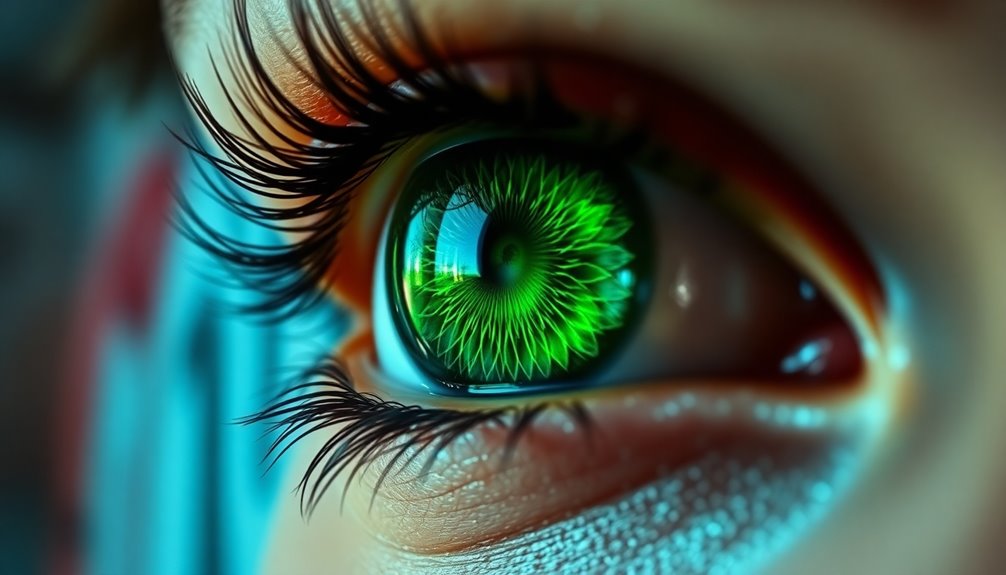
The allure of green eyes fascinates audiences across various forms of popular culture, making them a symbol of depth and uniqueness. Iconic characters like Scarlett O'Hara from "Gone With the Wind" and Harry Potter showcase how green eyes represent exceptional beauty and intrigue.
These characters not only enhance narratives but also inspire admiration, reflecting the rich themes of mystery often associated with this eye color.
Celebrities such as Adele and Rihanna, known for their striking green eyes, contribute greatly to the fascination surrounding this rare trait in the entertainment industry. Their presence reinforces the enchanting allure of green eyes, making them a sought-after feature.
Music also plays a role, with Coldplay's song "Green Eyes" romanticizing this captivating quality, further embedding it into popular culture.
In films and literature, green-eyed characters often embody themes of allure and enigma, reinforcing their status as symbols of beauty.
Social media platforms have created communities that celebrate green eyes, allowing individuals to share experiences and beauty tips. This cultural visibility enhances the appreciation for green eyes, solidifying their place in the tapestry of popular culture. Furthermore, the fascination with green eyes mirrors the public's intrigue with celebrities like Tom Cruise, who captivates audiences with his daring performances and on-screen charisma.
Frequently Asked Questions
What Does the Green Eye Symbolize?
Green eyes symbolize rarity and beauty, making them an enchanting feature.
You'll find they often represent deep emotions like love, envy, and jealousy. In various cultures, they're seen as windows to the soul, reflecting wisdom and emotional depth.
This vibrant hue connects to nature and creativity, emphasizing individuality.
When you encounter someone with green eyes, you might feel drawn to their mysterious allure and the untamed beauty they embody.
What Do Emerald Eyes Mean?
Emerald eyes carry a unique meaning, often seen as symbols of rarity and beauty.
When you encounter someone with such striking eyes, you might feel a sense of fascination and admiration.
These eyes are linked to mystery and emotional depth, inviting you to explore the person's inner world.
Additionally, they evoke themes of creativity and intuition, suggesting a vibrant connection to nature and the complexities of human relationships.
What Is the Metaphor of Green Eyes?
When you think about the metaphor of green eyes, you see them as a symbol of rarity and depth. They evoke feelings of mystery and enchantment, suggesting that someone with green eyes holds unique insights or emotional complexity.
Their vibrant color reflects themes of love, jealousy, and introspection, making them a window to the soul. This fascinating allure connects you to nature's essence, growth, and the profound experiences of human emotions.
What Do Green Eyes Symbolize in the Bible?
Imagine a world where green eyes are magical portals to beauty, envy, and divine insight!
In the Bible, these striking eyes symbolize unique beauty and allure, like Rachel's enchanting gaze. They're also tied to nature and fertility, reflecting God's creation.
Yet, they can evoke envy, reminiscent of Cain's jealousy.
Ultimately, green eyes represent spiritual insight, urging you to see beyond the surface and recognize the profound uniqueness within yourself and others.
Conclusion
In a world where green eyes shine like the emerald depths of a mystical forest, you can't help but feel their allure. These rare gems of humanity carry a wealth of stories, weaving through cultures and history with a vibrant thread. As you gaze into those enthralling eyes, you're drawn into a domain of creativity and passion, much like the brushstrokes of a master painter. Embrace the enchanting symbolism they hold, and let their insight guide your journey.

